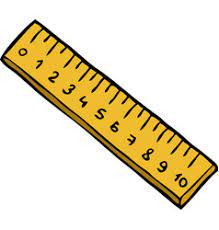The United States is the only developed country in the world to not use the metric system. We are in the same club as Myanmar and Liberia. That’s it.
We use what’s called “The U-S Standard” measurements, which were adapted from “The Imperial” measurement system, meaning we inherited our seemingly arbitrary system from our British forefathers.
Yet, because we are living in a more global world with more international exchanges and contacts, more of us need to learn the metric system as well as the more familiar U-S Standard. You may have already noticed that soda comes in liter-size bottles. Alcohol, too. You will probably see more metric measurements on food packaging in the coming years. But why has the U-S not adopted metrics?
The history of the American flirt with metrics starts with Thomas Jefferson, who successfully proposed dividing the currency into decimals, the first country to do so. Next came the French, who during their great revolution, adopted a metric system of measures. Scholars said it was much easier to divide by 10 than the old system. It just seems to make sense for water to freeze at 0 and boil at 100 instead of 32 and 212 respectively.
But an argument can be made for the old system, our adapted Imperial measurements. Those old measurements are based on everyday things and body parts. For example, acres were based on the amount of land a man could plow in a day. A foot really was a foot, a yard was from the tip of your fingers to your nose.
The metric system gives the world a selling system. It is an International Unit system for measuring goods and compensation with a value that is the same all over the world. This common system allowed less advanced societies to join international trade. Those countries had an incentive to switch to the metric system. That push never happened in the United States.
Instead, American resistance became a political issue for conservatives and libertarians who felt “forcing” people to switch to a whole new system of measurement went against the principles upon which the nation was founded. Meanwhile, metric supporters said the United States’ failure to adopt an international system would lead to another Great Depression as our ability to trade would collapse. Throughout the 1960s and 70s, repeated efforts were made to make the switch, but each time was met with resistance.
The metric system has made some headway into the American sense of measurement. There are the aforementioned examples of liter size soda bottles, most instructions on the packaging are in more than one language and therefore must use metric measures alongside the American Standard measurements. The failed efforts have often baffled the international community which wondered why it was so important? Just change, already. The government has tried to ease Americans into a change by short-lived experiments like speed limit signs in kilometers and the push to use Celsius to give the temperature, as well as in Fahrenheit.
Metric proponents believe the U.S. will have to consider making the switch again because of a more connected world. International business will again need to push for dual-labeling and increased use of the metric system. Many new technologies are coming to our society designed in metric. That leads some experts to say the conversion to metric has already begun and it will continue to grow in use.
But others say we are preserving a system of measurement that may not be consistent, but is more human. They worry that if these old measurements disappear after centuries of use we will creep toward a global monoculture.
From a personal standpoint, I am becoming more comfortable in using metric measurements, because they do make sense. All of my clocks are set for 24-hour time. Thermometers are set in Celsius. But I still use good ol’ spoons and cups, too. You don’t need to remember some sort of conversion formula. But we all do need to get used to using it more so we “understand” these measurements like we do our current system. It’s sort of like learning a new language, so no matter which measurements are used, you understand what they mean.
